




























Hawkesbury Mayor Les Sheather’s 2024 election campaign was bankrolled by a local business lobby group chaired by the same developer behind a controversial land deal that Sheather voted to approve.
According to official disclosures released this week by the NSW Electoral Commission, Sheather’s campaign - totalling $7,320.50 - was wholly funded by the Hawkesbury Business Group (HBG). The business lobby group - formed just prior to last September’s Council elections - is chaired by John Camilleri, owner of Hypro Pet Foods and Hypro Investments.
Hypro was the would-be purchaser of the Council-owned land at 295 Sackville Road, Wilberforce - home to the Woodlands Park Pony Club for over 40 years. The $5.9 million sale was approved by Council in August 2023 in a vote. The proposed sale was pushed ahead without public tender or community consultation. Clr. Sheather voted in favour of the sale and later used his casting vote to block a rescission motion.
Camilleri’s group, HBG, has been vocal in advocating for the rezoning and sale of Council land for industrial development. The group states its mission is to “advocate for better planning processes, infrastructure
improvements, and the release of commercial and residential land.” HBG secretary Jeff Ferrara has said, “The lack of industrial land is a pressing concern… The Council’s actions in this instance are a step in the right direction.”
Emails obtained by the Hawkesbury Post under freedom of information legislation (GIPA) last year reveal that Clr. Sheather was directly involved in brokering the deal with Hypro. A February 15, 2024 email from Council’s Chief Financial Officer to a colleague confirms Sheather had approached Council’s Property Manager about an offer on the land. “Council [Les] Sheather did follow up with Laurie on Tuesday regarding someone wanting to purchase, so I think Laurie knows it is coming. Interesting proposal – thanks for the heads up ��,” the CFO wrote
The block, zoned RU2 Rural Landscape and deemed unsuitable by Council in 2020 for essential services due to its biodiversity value, was sold at what was described as “well above market value” for its current permissible uses. The sale sparked community backlash and confusion among councillors, most of whom were unaware that discussions with Hypro had commenced months earlier. Documents also reveal that Council sought two val-
uations on the land, one under its existing RU2 zoning and a second under RU4 industrial zoning.
In a surprise move, Hypro Investments pulled out of the purchase just days after the sale was approved in November 2024, prompting Council’s General Manager to notify councillors by email that the company had decided not to proceed.
“I am emailing to inform you that Hypro Investments have advised Council they have decided not to pursue the purchase of 295 Sackville Road, Wilberforce. Staff will prepare a report to a future meeting of Council outlining options moving forward,” Hawkesbury City Council general manager Elizabeth Richardson said via email. No further explanation has been provided as to why the sale did not proceed.
The bushland block had been leased to the Woodlands Pony Club for 40 years. The Council had previously deemed the land unsuitable for the new Hawkesbury fire control centre due to its high biodiversity value.
No public explanation has been given by Clr. Sheather regarding the donation or his role in the Hypro negotiations. He did not respond to questions from the Hawkesbury Post by the time of publication.
Riverside Gardens is a boutique retirement village offering stylish residences within a safe, independent living community.
Established in 2010, Riverside Gardens consists of 2 and 3 bedroom villas and apartments nestled amongst established gardens and tree lined streets.
On a daily basis, the community centre is a hive of activity and a beautiful space for residents to socialise and enjoy.
Riverside Gardens is conveniently located within walking distance of North Richmond shops, cafes, and endless recreation.

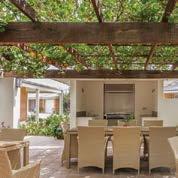
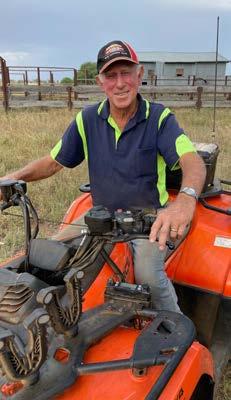


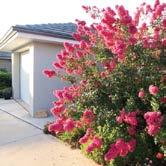

www.hawkesburypost.com.au www.facebook.com/hawkesburypost
How to get the News
The Hawkesbury Post is available at all Hawkesbury newsagents free of charge and 100 other local locations.
Online
All stories can be found online. www.hawkesburypost.com.au
New stories are added daily.
The Hawkesbury App
Download from the App Store or Google Play
Contacts
Editorial info@hawkesburypost.com.au
Advertising trish@hawkesburypost.com.au wendy@hawkesburypost.com.au
Design and production
Design2Pro
Publisher Australian Neighbourhood Media

Dear Editor, There is evidence which raises doubt that the radial gates at Warragamba Dam will escape damage in a flood that approximates the water level which breaches the auxiliary spillway. If the radial gates fail to close when the dam flood water drains to the normal full supply level, an additional 800+ gigalitres [40% of dam capacity], or approximately 2.0 meters in flood height downstream, will continue to drain from the dam into the H-N River. The rate at which this water is added to the downstream flood depends on the degree of gate damage. At worst, it could occur when the down-stream flood has peaked or has just begun to recede and will heighten or prolong the flood. If this extra volume is deemed to have caused additional damage downstream, WaterNSW who is the dam owner, maybe in breach of the Dams Safety Act of 2015. The Act says dam owners are legally responsible for the safety of their dam and accountable for the damage their dam may cause if it fails in any way.
Best regards, Ian Nicholls
8 Dunkeld Ave
Baulkham Hills
NSW 2153

You won’t see their faces on campaign billboards. You won’t hear their stories in flashy election ads. But tonight – just like last night, and the night before – thousands of older Australian women will sleep in cars, crisis accommodation, or on a friend’s couch with nowhere to go.
They are the fastest-growing group of homeless Australians. Many are women who worked all their lives, raised children, cared for ageing parents, and now face the terrifying prospect of homelessness in their 60s, 70s, and even 80s.
They are not lazy or irresponsible. They are us – and we are failing them.
According to the Australian Bureau of Statistics, the number of women over 55 experiencing homelessness jumped by 31% between 2011 and 2016. By the 2021 Census, the figure had reached 7,325 – but even that is considered a gross undercount, because so many remain hidden: sleeping in cars, couch surfing, house-sitting, quietly slipping through the cracks.
Behind these numbers are familiar stories. Women who left the workforce to raise children. Who were paid less, promoted less, and now retire with half the superannuation of men. Women who spent years caring for others – only to be met with poverty in return.
And it’s not just that women are more likely to work in lower-paid, socalled ‘feminised’ industries – like aged care, childcare, and nursing – sectors essential to the functioning of society, yet consistently undervalued. It’s also that women continue to be paid less for doing the same work as men in the same industries. Across nearly every sector, from healthcare to education to law, women earn less than their male colleagues, even when qualifications, experience and roles are the same.
This isn’t about merit. It’s about bias – conscious and unconscious. It’s about promotion gaps, bonus gaps, and an entrenched belief that women’s work, time and labour are worth less.
The gender pay gap runs deep, and it compounds over a lifetime. Women earn less because they’re more likely to work part-time, more likely to take time out for caregiving, and more likely to be passed over for advancement – but also
because they are simply paid less for doing the same job. By retirement, they are left with significantly less savings and superannuation – and often, with no safety net at all.
They are not homeless because of bad decisions. They’re homeless because the system was never built for them.
A 2020 report by Housing for the Aged Action Group and Social Ventures Australia estimated that 405,000 older women are at risk of homelessness. That’s nearly half a million women walking a tightrope between surviving and slipping through.
This isn’t new. A 2022 parliamentary inquiry found older women falling through every gap in every system meant to protect them – from family law to superannuation, from social housing to crisis support. Some left relationships with nothing after years of unpaid labour. Some experienced financial abuse. Many never recovered from the cost of raising children alone.
The family law system – with its steep legal costs and outdated assumptions –often leaves women with the kids but not the house, not the support, and certainly not the recognition. A woman can give up her career to raise a family and walk away with little more than a Centrelink payment and a legal system she can’t afford to engage with.
Others stayed in abusive relationships out of fear – fear they couldn’t make it financially, fear for their children – and now find themselves abandoned in old age. Not just by their partners, but by the very systems that promised to help them rebuild.
Some left the Family Court years ago with a parenting order and a bag of clothes, believing that would be enough to start over. It wasn’t.
And yes, this is happening here too –in the Hawkesbury. Local homelessness services say they’re seeing more older women than ever before. Some are living in cars behind shopping centres. Some rotate between relatives’ homes. Many have never asked for help in their lives.
Governments of all stripes have known this crisis was coming. The warnings were loud and clear. The data has been there for years. Still, the system continues to look the other way – maybe
because these women are older, or poor, or simply not politically convenient.
During the 2025 federal election campaign, both major parties have talked a lot about housing – but not much about this. Labor’s Housing Australia Future Fund includes a pledge for 4,000 homes for women fleeing violence and older women at risk, plus $100 million for crisis accommodation. It’s something. But critics say the broader women’s budget barely touches women over 50 – the group most at risk.
The Coalition has focused on allowing superannuation to be used for first home purchases – a policy that does little for women with no super and no hope of entering the housing market. Older women don’t even rate a mention in the Coalition’s housing platform. Opposition Leader Peter Dutton has spoken of home ownership as a solution to women’s issues, but that skips the obvious: for many older women, home ownership is simply not an option. Not when rent consumes more than half their pension, and public housing waiting lists stretch for years.
And so, the silence lingers.
It’s easy to say this is complex – and it is. But it’s also painfully simple: we either choose to see these women, or we don’t.
As Dr Emma Power from Western Sydney University put it, “Older women have been invisible in housing policy for decades. They are the collateral damage of a housing market that serves investors, not people.”
This isn’t just about funding. It’s about priorities. It’s about whether we believe a 74-year-old woman – who spent her life contributing to her family and her community – deserves to be safe. Or whether we’re content to leave her to a rental market that doesn’t even see her. Homelessness at this stage of life is more than a policy failure. It is a moral one.
And for a country that claims to believe in the 'fair go', turning our backs on these women may be the most damning verdict of all.
Editor, Samantha Magnusson sam@hawkesburypost.com.au
Hawkesbury City Council has made a submission on the controversial $213 million Island Oasis tourist development in Kurrajong Hills - almost a year after its input was first due and only after pressure from frustrated residents.
Internal documents obtained under freedom of information laws reveal that the Council missed at least six deadlines last year for providing feedback to the NSW Department of Planning, which is assessing the project. Yet for months, Council insisted it had not missed any deadlines, even demanding that the Hawkesbury Post retract its reporting and issue a “correction acknowledging your errors.”
Emails between the Council and the Department tell a different story. The first deadline for the Council’s input was May 30, 2024. On June 17, a Department official followed up, writing: “Do you have an ETA on Council’s response/ comments? Noting that we have not received anything.” Council’s Strategic Planning Manager, Andrew Kearns, replied that comments would be provided the next day. They weren’t. Council had previously claimed it was verbally told during May 2025 not to provide input.
By June 25, the Department, still waiting, withdrew its original request and later reissued it. Over the following months, it sent repeated reminders, pressing Council for input. Again and again, Council promised a response— again and again, it failed to deliver.
The delays continued for months. By October 4, the Department was still chasing the Council for input. On February 25, the Department confirmed that it had still not received a response. It wasn’t until March 17 - almost 10 months after the original deadline - that the Council finally submitted its comments.
Despite the clear paper trail, the Council launched an aggressive attack on the Hawkesbury Post for reporting the story. On January 16, it wrote to the Post insisting that its article on the delays was “factually incorrect” and demanded its immediate removal.
“The assertions made within the article Council Misses Deadline on Controversial 200M Kurrajong Development are factually incorrect, and we strongly request that you remove the article from publication to prevent this misinformation from further circulating in the community.
Council has not missed a deadline to “lodge an objection” as your article charges…” A council spokesperson wrote.
Four days later, on January 20, the Council doubled down, accusing the Post of relying on “very incomplete information” and displaying a “fundamental lack of understanding” of the planning process.
Council’s accusations didn’t stop there. It insisted the Hawkesbury Post publish a correction acknowledging its so-called “errors.” Yet two separate freedom of in-


formation requests - one to Council and another to the Department of Planning - confirmed that the Post had been right all along. Council had repeatedly missed deadlines, ignored follow-up requests, and attempted to bury the truth.
The project itself has drawn strong opposition from Kurrajong residents concerned about its impact on local wildlife, including endangered koalas and platypuses, and the risk of pollution in waterways that support the threatened Macquarie Perch. Fire safety, traffic congestion, and a lack of infrastructure in the area are also major concerns.
Emails show that the Council was well aware of the growing frustration from residents, who were demanding to know why the Council failed to provide input on such a significant development.
Governance Coordinator Karina Ward, in approving the release of documents under freedom of information laws, acknowledged the importance of transparency, stating that the project was “of substantial interest to the Hawkesbury community” and that the release of information would “enhance government accountability.”
Indeed, in a letter to the Post, granting the release of documentation Hawkesbury City Council Governance Coordinator Karina Ward said in approving the release of information, that the project to be “of substantial interest to the Hawkesbury community”. This makes the Council’s decision to drag its feet on input into the project more than 10 months after it was first invited to give its views, even more difficult to understand.
“The release of the information to a local media outlet could reasonably be expected to enhance government accountability and transparency regarding the assessment process,” Ward added.” This was taken into account as a significant public interest consideration in favour of the release of the information”.
HCC’s belated submission was made on March 17, following pressure and representations from residents who were furious about the serial delays and broken promises on the timing of its submission.
In the end, Council’s submission -
which recommends a battery of studies - came not because of its own diligence, but because of public pressure. And despite its repeated denials and attempts
to discredit the Hawkesbury Post, the records tell the real story - one of delays, obfuscation, deflections, and a stubborn refusal to acknowledge the facts.


As Australians prepare to head to the polls on May 3, the seat of Macquarie is once again shaping up as a critical and closely watched contest.
Currently held by Labor MP Susan Templeman, Macquarie has long been known as a bellwether seat - a barometer for the national mood, frequently flipping between the major parties as power changes in Canberra. Stretching from the escarpments of the Blue Mountains down to the floodplains of the Hawkesbury. The electorate is as politically diverse as its landscape including the Blue Mountains City Council, Hawkesbury City Council,and parts of both Penrith City Council and Wollondilly Shire Council.
Macquarie has a rich political history dating back to 1901, the year of Federation. Named after Governor Lachlan Macquarie, the early colonial leader often credited with shaping modern New South Wales, the seat was once a sprawling rural electorate stretching from Bathurst to Lithgow. It spent much of the 20th century anchored in country towns and Labor strongholds. The seat was once held by Labor legend Ben Chifley, who served as Prime Minister from 1945 to 1949 and famously caught the train home to Bathurst each Friday.
A major redistribution in 1977 pushed Macquarie eastward, adding more of the Blue Mountains and beginning its gradual shift towards Sydney’s outskirts, transforming Macquarie into one of the most marginal electorates in the country. Today, Macquarie is a battleground between the progressive heart of the Blue Mountains and the more conservative edges of the Hawkesbury - a far cry from the vast country seat it once was.
For much of the 20th century, Macquarie leaned Labor, helped along by


favorable boundaries. But as demographics shifted - particularly with urban sprawl into the Hawkesbury - the seat became more marginal. From the 1980s onwards, it has changed hands multiple times, often reflecting broader national swings.
In 1996, as John Howard swept to
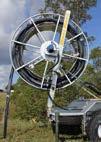


power in a landslide, Liberal candidate Kerry Bartlett took the seat from Labor. He held it until 2007, when the boundaries changed once again to include Lithgow and Bathurst and the Rudd wave saw Bob Debus, a former NSW Attorney General, take it back for Labor.
However, a further redistribution in 2009 kept Macquarie in play with narrow margins. In 2010, Liberal Louise Markus edged out Labor by just over 2,000 votes when she moved from Greenway to Macquarie. She held on in 2013, but in 2016 the pendulum swung again - this time to Labor’s Susan Templeman, who capitalised on anger over funding cuts to local schools and hospitals.
Templeman held the seat by 371 votes in 2019 and in 2022 increased her margin to 7.58%. The most recent electoral redistribution has eased her margin to 6.3% for the current election. That history highlights the volatility of Macquarie - it’s a seat where small local shifts can have national consequences.
In this election, Hawkesbury City Councillor Mike Creed is attempting to win the seat back for the Liberals. A first-time federal candidate, Creed brings a local profile and a campaign focused on cost-of-living pressures, infrastructure, and disaster resilience, particularly in flood-prone Hawkesbury.
“I can’t promise to fix everything - that would be lying - but I will always do my best to help,” he says. “If I can’t fix something, I’ll be honest about it. People just want someone who listens and tries their hardest.”
Macquarie’s incumbent, Templeman, is running on her track record of local advocacy, disaster recovery work during the bushfires and floods, and securing federal funding for schools, roads, and community infrastructure.
Templeman, a former radio journalist and small business owner, has built her brand around being visible and vocal in a large and geographically complex electorate. During the campaign, Templeman has focused strongly on Medicare, promising a local Urgent Care Clinic, telehealth for urgent care, and cheaper women’s health. She believes that the upcoming election is centered on national concerns rather than individual candidates.
"These are the big issues, about who do you trust to deliver a good budget, rather than who's nice or who's sweet."
Tempelman says.
She says the economic security of families is a top priority. She points to Labor's commitment to increasing workers' pay, reducing inflation to alleviate interest rate pressures, and maintaining balanced budgets as key components of their strategy.
"I think right now, what people are worried about is the security of their own family economically," she says. Also contesting the seat are:
• Terry Morgan from The Greens, running on a platform of climate action and affordable housing. He wants an accelerated shift to renewable energy, an end to logging native forests, and increased investment in cheap, efficient public transport powered by renewables.
• Matthew Jacobson from One Nation, promoting immigration controls, cutting unnecessary government spending, and stronger defence policies.
• Joaquim Eduardo De Lima from the Libertarian Party, campaigning for less government and more personal freedoms.
• Roger Gerard Bowen from Family First, focusing on socially conservative values, protecting faithbased schools, opposing "radical" gender ideology, and upholding Judeo-Christian values.
Nationally, the contest between Prime Minister Anthony Albanese’s Labor government and Opposition Leader Peter Dutton’s Liberal-National Coalition remains tight. Recent polling has Labor just ahead - 52–48 on a two-party-preferred basis - but both parties are bracing for a potential hung parliament. That makes seats like Macquarie critical to determining who will govern.
With its mix of progressive Blue Mountains voters and more conservative Hawkesbury communities, Macquarie is a microcosm of modern Australia. It reflects the friction between environmental protection and economic development, between climate action and cost-of-living concerns.
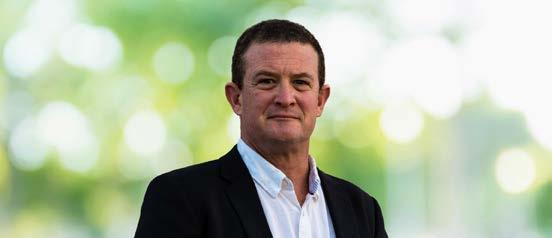



As Australians prepare to vote on May 3, the seat of Macquarie is again shaping up as a closely watched seat, with a field of candidates offering voters a sharp choice on national and local priorities.
Labor’s Susan Templeman is seeking re-election on the back of her record in disaster recovery, health, and community infrastructure. Templeman, a former radio journalist and small business owner, has made Medicare a centrepiece of her campaign, promising a new local Urgent Care Clinic, expanded access to telehealth services, and cheaper women’s healthcare. She is also emphasising Labor’s broader economic message of increasing wages, bringing down inflation, and maintaining balanced budgets.
Challenging her is Liberal candidate Mike Creed, a Hawkesbury City Councillor making his first tilt at federal politics. Creed is focusing on cost-of-living pressures, better infrastructure, and flood resilience across the electorate, particularly in the Hawkesbury.
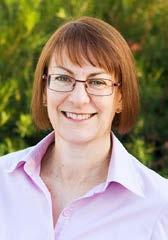
The Greens’ Terry Morgan is campaigning on climate action and affordable housing. Morgan is calling for faster investment in renewable energy, an end to native forest logging, and better public transport powered by clean energy.
One Nation’s Matthew Jacobson is running on a platform of stronger immigration controls, cutting government spending, and building up Australia's defence capabilities.
Joaquim Eduardo De Lima from the Libertarian Party is advocating for smaller government, lower taxes, and more personal freedoms.
Roger Gerard Bowen from Family First is focusing on socially conservative policies, including protecting religious schools, opposing “radical gender ideology,” and promoting what he describes as Judeo-Christian values.
With Labor and the Coalition locked in a tight national contest, Macquarie’s outcome could help determine who forms government.

With less than a week to go before the 2025 Federal Election, a case in the seat of Macquarie is exposing deep flaws in Australia's electoral disclosure laws - laws that are supposed to let voters see who is funding their candidates. The reality? The system is failing.
Documents presented to the Macquarie Federal Electorate Conference (FEC) following the 2022 federal election show that the Liberal campaign in Macquarie raised $320,220 and spent $369,044 in an attempt to unseat Labor MP Susan Templeman. The bid failed spectacularly, with a 7.58% swing against the Liberals.
But what’s most alarming isn’t the political miscalculation - it’s what the public wasn’t told.
Despite a campaign that cost over $360,000, Liberal candidate Sarah Richards (McMahon) declared $0 income and $0 expenditure on her official candidate return to the Australian Electoral Commission (AEC) following the 2022
election. That’s not a typo - it’s what her disclosure says.
Her return is available on the AEC’s “Transparency Register”, but there’s no trace of the $320,220 in income or any campaign spending. That money appears only in a separate financial report tabled at the Macquarie Liberal FEC’s Annual General Meeting in Windsor on December 14, 2022 - but not in the official record meant for voters.
This is not an isolated incident. Richards(McMahon) filed similarly blank returns in previous elections, effectively bypassing any public scrutiny of who contributed to her campaigns or how the money was spent.
So what’s going on?
Under current rules, candidates are supposed to file an election return showing what they raised and spent. Parties, meanwhile, file separate annual returns - but these lump together donations from across the organisation. You won’t find a line item for Macquarie - just a wall of numbers that hides more than it reveals.
The loophole is clear: if a candidate routes all money through their party, they can effectively file a blank return - even if hundreds of thousands were spent on their behalf. That appears to be exactly what happened in Macquarie.
And this is not an isolated incident - nor is it confined to one party or one seat. All major parties routinely exploit the same loophole. Templeman’s disclosures also shows $0. Donations and campaign expenditure are funnelled through party accounts, bypassing the transparency requirements that are supposed to apply to individual candidates.
That means voters can’t see who’s backing a candidate, how much they’re spending, or where that money’s going. It makes it easy to cover up the source of donations - and raises a bigger question: why would politicians want to hide who is funding their campaigns?
The system is broken. It creates an illusion of transparency while giving political operators the tools to avoid
real scrutiny. In Macquarie, that lack of accountability has left lasting damage. Financial records show the local Liberal branch went from nearly $70,000 in the bank before the 2016 election to tens of thousands in debt after the 2022 campaign. It was a staggering overspendwith no results and no accountability. Meanwhile, voters are kept in the dark.
The public has a right to know who is funding political campaigns. That’s the point of disclosure laws. But when those laws are full of holes, and politicians on all sides make use of them, the system stops serving the people it was designed to protect.
Election after election, parties talk about trust, integrity, and transparency. But when it comes to telling voters who’s really paying the bills, they all fall silent.
With a federal election days away, the question isn’t just who you’ll vote for - it’s whether you’ll ever really know who’s backing them.
Residents of the Macquarie electorate are gearing up for the 2025 federal election, scheduled for Saturday, May 3. Encompassing the Blue Mountains and parts of the Hawkesbury region.
Voting is compulsory for all Australian citizens aged 18 and over. On election day, polling places will be open from 8:00 am to 6:00 pm. Voters will receive two
Polling Place Street Address
ballot papers: a green one for the House of Representatives and a white one for the Senate. For the House, voters must number every box in order of preference. For the Senate, voters can vote above the line by numbering at least six boxes for parties or groups, or below the line by numbering at least twelve boxes for individual candidates.
Early voting (pre-poll) commenced
Bilpin Bilpin Public School, 2517 Bells Line of Rd, BILPIN NSW 2758
Blackheath Blackheath Public School, Leichhardt St, BLACKHEATH NSW 2785
Blaxland Blaxland High School, 3-9 Coughlan Rd, BLAXLAND NSW 2774
Blaxland East Blaxland East Public School, 53 Old Bathurst Rd, EAST BLAXLAND NSW 2774
Bligh Park Bligh Park Public School, 64 Alexander St, BLIGH PARK NSW 2756
Bligh Park East Windsor Park Public School, Rifle Range Rd, BLIGH PARK NSW 2756
Cattai Cattai Public School, 487 Cattai Rd, CATTAI NSW 2756
Colo Heights Horre Eley Memorial Hall, Putty Rd, COLO HEIGHTS NSW 2756
Comleroy Road Comleroy Road Public School, McMahons Rd, KURRAJONG NSW 2758
Divisional Office (PREPOLL)
Divisional Office, Shop 4, Raymond Mall, 7-9 Raymond Rd, SPRINGWOOD NSW 2777
Ebenezer Ebenezer Public School, 531 Sackville Rd, EBENEZER NSW 2756
Faulconbridge Springwood High School, Grose Rd, FAULCONBRIDGE NSW 2776
Freemans Reach Hawkesbury High School, Kurmond Rd, FREEMANS REACH NSW 2756
Glenbrook Glenbrook Public School, Woodville Rd, GLENBROOK NSW 2773
Glossodia Glossodia Community Centre, 162 Golden Valley Way, GLOSSODIA NSW 2756
Grose View Grose View Public School, Grose Wold Rd, GROSE VALE NSW 2753
Hazelbrook Hazelbrook Public School, Beechmount Ave, HAZELBROOK NSW 2779
Hobartville Hobartville Public School, Valder Ave, HOBARTVILLE NSW 2753
Katoomba Katoomba Public School, Merriwa St, KATOOMBA NSW 2780
Katoomba Central St Canice's Church Hall, 158 Katoomba St, KATOOMBA NSW 2780
Katoomba Hospital Blue Mountains District Hospital, cnr Great Western Hwy &, Woodlands Rd, KATOOMBA NSW 2780
on Tuesday, April 22, and will continue until Friday, May 2. Pre-poll centres are open Monday to Friday from 8:30 am to 5:30 pm, and on Saturday, April 26, from 9:00 am to 4:00 pm. Extended hours may apply on Friday, May 2. Postal vote applications closed at 6:00 pm on Wednesday, April 30. The Macquarie electorate includes towns such as Katoomba, Springwood,
Polling Place Street Address
Katoomba North Katoomba North Public School, Barton St, KATOOMBA NSW 2780
Katoomba PPVC 212 Katoomba St, cnr Katoomba and Waratah Sts, KATOOMBA NSW 2780
Katoomba South Katoomba High School, Martin St, KATOOMBA NSW 2780
Kurmond Kurmond Public School, Bells Line of Road, KURMOND NSW 2757
Kurrajong Kurrajong Public School, 1111 Grose Vale Rd, KURRAJONG NSW 2758
Kurrajong East Kurrajong East Public School, 891 East Kurrajong Rd, EAST KURRAJONG NSW 2758
Kurrajong Heights Uniting Church Hall, 2175 Bells Line of Rd, KURRAJONG HEIGHTS NSW 2758
Lapstone Lapstone Public School, 1 Explorers Rd, LAPSTONE NSW 2773
Lawson Lawson Public School, Adelaide Street, LAWSON NSW 2783
Leura Leura Public School, Mount Hay Rd, LEURA NSW 2780
Leura Central Morven Gardens Centre for Aged Care, 5-19 Morven Rd, LEURA NSW 2780
McGraths Hill McGraths Hill Community Centre, 1 Phillip Pl, MCGRATHS HILL NSW 2756
Maraylya Maraylya Public School, Neich Rd, MARAYLYA NSW 2765
Medlow Bath Medlow Bath Bush Fire Brigade, Railway Pde, MEDLOW BATH NSW 2780
Mount Riverview Mount Riverview Public School, 188-204 Rusden Rd, MOUNT RIVERVIEW NSW 2774
Mount Victoria Mount Victoria Public School, Victoria St, MOUNT VICTORIA NSW 2786
Mount Wilson Mount Wilson Village Hall, The Avenue, MOUNT WILSON NSW 2786
North Richmond North Richmond Community Centre, 33 William St, NORTH RICHMOND NSW 2754
Oakville Oakville Public School, Oakville Rd, OAKVILLE NSW 2765
Pitt Town Pitt Town Public School, 17 Buckingham St, PITT TOWN NSW 2756
Richmond St Monica's Primary School, 32 Francis St, RICHMOND NSW 2753
Richmond, and Windsor. Polling places are typically located in local schools, community halls, and public buildings. A full list of polling booths in the Macquarie electorate is provided below. For more information on where and how to vote, visit the Australian Electoral Commission's website at www.aec. gov.au.
Polling Place Street Address
Richmond Central St Andrew's Uniting Church Auditorium, 25 West Market St, RICHMOND NSW 2753
Richmond PPVC Shop 3, 139 Windsor St, RICHMOND NSW 2753
St Albans School of Arts, Upper Macdonald Rd, ST ALBANS NSW 2775
Special Hospital Team 1
Multiple sites, NSW
Springwood Springwood Civic Centre, 106-108 Macquarie Rd, SPRINGWOOD NSW 2777
Springwood North Ellison Public School, cnr Ellison Rd & Comet Pl, SPRINGWOOD NSW 2777
Springwood PPVC Presbyterian Church Hall, 160 Macquarie Rd, SPRINGWOOD NSW 2777
Springwood South Springwood Public School, Burns Rd, SPRINGWOOD NSW 2777
Sydney (Macquarie)
Sydney Town Hall, George St, SYDNEY NSW 2000
Tennyson Tennyson Bush Fire Brigade, 246 Tennyson Rd, TENNYSON NSW 2754
Valley Heights Blue Mountains Grammar Preparatory School, Tusculum Road, VALLEY HEIGHTS NSW 2777
Vineyard East (Macquarie)
Vineyard Public School, 4 Bandon Rd, VINEYARD NSW 2765
Warrimoo Warrimoo Citizens Hall, 7 Eley Hawkins Dr, WARRIMOO NSW 2774
Wentworth Falls
Wentworth Falls Public School, Falls Rd, WENTWORTH FALLS NSW 2782
Wilberforce Wilberforce Public School, Macquarie Rd, WILBERFORCE NSW 2756
Windsor The Deerubbin Centre, 300 George St, WINDSOR NSW 2756
Windsor South Windsor South Public School, Church St, SOUTH WINDSOR NSW 2756
Winmalee Winmalee High School, High School Dr, WINMALEE NSW 2777
Woodford Woodford Bush Fire Brigade, cnr Park Rd & Railway Pde, WOODFORD NSW 2778
Yarramundi Yarramundi Community Centre, Thornbill Way, YARRAMUNDI NSW 2753
With the federal election approaching, voters in the seat of Macquarie will soon head to the polls to choose who represents them in Canberra. But before you cast your vote, it’s worth brushing up on how government actually works - and who’s responsible for what.
Australia has three levels of government: federal, state and local. They each have different jobs, but sometimes the lines get blurry. One tier builds highways, another runs the hospitals, and the third decides when your bins get collected. So who does what?
Big
This is the level we’re voting for in the upcoming election on May 3. The federal government, based in Canberra, handles national matters like defence, immigration, foreign affairs, Medicare, Centrelink, and taxation. If it’s something that affects the whole country, it usually falls here.
The federal government also funds aged care, universities, and the National Disability Insurance Scheme (NDIS), and it helps pay for major infrastructure projects, often in partnership with state governments.
Macquarie is a federal electorate that covers the Blue Mountains and parts of the Hawkesbury. When you vote, you're choosing a Member of Parliament (MP) to represent this area in the House of Representatives. You'll also help elect NSW’s representatives in the Senate.
The Senate is often called the house of review. Its job is to scrutinise, amend, and sometimes block legislation passed by the lower house. Each state, no matter its population, elects 12 Senators, while the two territories elect two each. The Senate plays a key role in keeping the government in check and ensuring smaller states still have a voice.
The NSW Government is responsible for hospitals, public schools, TAFEs, police, major roads, public transport, and emergency services like the Rural Fire Service and SES. If you’ve ever waited in an emergency department, enrolled a child in a public school, or caught a train, you’ve dealt with the state government.
State governments also oversee planning decisions, water supply, and environmental protection. During floods or bushfires, it's often the state government making key decisions about evacuations and recovery.
NSW held its last state election in 2023. The next one is due in 2027.
Local Government – The Everyday Stuff
Closer to home, Hawkesbury and Blue Mountains City Councils take care of the things that shape day-to-day life: rubbish collection, local roads, footpaths, parks, libraries, community halls, pet registration, and play a role in development applications. They maintain sportsgrounds, swimming pools, and playgrounds, and support local events and activities. Councils don’t pass laws like state or federal governments, but they do set by-laws and make decisions that directly affect your street, your suburb, and your neighbourhood.
Council elections happen every four years. The most recent was in September 2024.
When something goes wrong - whether it’s a blocked drain, an overloaded school, or a long wait for a doctor - it helps to know which level of government is responsible. That way, you know who to ask for helpand who to hold to account.
As voters in Macquarie prepare for another federal election, understanding who does what is more important than ever. Because knowing where to point the finger is just as important as knowing where to put your vote.
Responsible for big-picture issues that affect the entire country
Labor is the current Government
Our electorate is Macquarie Federal Parliament has a House of Representatives with 150 Members representing seperate electorates (48 in NSW) and a Senate with 76 Members, 12 from each State and two from each Territory
Responsibilities
Manage national defence
Controls immigration policies
Collects income tax

They are led by a premier (state) or Chief Minister (territory) Labor is in Government in NSW, and Chris Minns is the Premier, Robyn Preston (Liberal) is our State Member
Parliament is based in Macquarie Street Sydney
Our State electorate is Hawkesbury
The NSW parliament has a Legislative Assembly with 93 Members representing 93 electorates plus a Legislative Council with 42 members representing the whole State
Responsibilities
Runs public schools
Manages police and emergency services
Oversees public transport
Councils have between 5 and 15 councillors overseen by a Mayor or a Lord Mayor (for capital city councils). Mayors should lead councils, chair meetings and guide community growth.
Our Mayor is Les Sheather and we have 12 councillors including Eddie Dogramachi, Danielle Wheeler, Nathan Zamprogno, Mary Lyons Buckett, Paul Veigel, Sarah McMahon, Shane Djuric, Amanda Kotlash, Jill Reardon and Peter Ryan. In some local government areas, the community votes for the mayor. In the Hawkesbury LGA , we do not vote for the mayor, elected councillors elect the mayor
Responsibilities
Maintains local roads and footpaths
Manages waste collection
Looks after local environment policies
Looks after parks and recreational areas
Organises community events
Mike Creed vividly recalls the confusion and fear of being an 11-yearold caught in a roaring protest outside Parliament House in 1996. His Year Six class had traveled to Canberra for a routine school excursion, only to find themselves swept into a furious union demonstration against the Howard Government’s industrial relations changes.
“Half of us got stuck inside Parliament, and the other half - including me - were trapped outside in the protest,” Creed says. “The teachers were panicking, trying to get us out, but the crowd didn’t care that there were a bunch of kids in the middle of it. They just stormed forward.”
That chaotic experience, he says, was his first real encounter with politicsand it left a lasting impression. Within a year, he was handing out flyers for the Liberal Party during the 1996 Lindsay by-election, eager to learn more about government. Nearly three decades later, the boy who once stood on the sidelines is now the Liberal Party’s candidate for the federal seat of Macquarie.
A lifelong Macquarie local, Creed's political philosophy is deeply shaped by his mother Fiona Creed, a single parent who juggled multiple jobs to support Creed and his three siblings. By his own admission Creed describes himself as “a bit of a Mum’s boy”. He said his mother is his greatest inspiration having worked two or three jobs just to make ends meet. “She taught us that nothing is handed to you - you work hard, you contribute, and you give back to your community.”
“Mum was a big influence on my life, in pretty much every aspect of it. She is one of my biggest role models and

probably my best friend. I've watched what she's gone through and the sacrifices she's made for her family, that just makes me more determined,” he said.
His mother’s influence extended beyond the home - she served as a councillor and deputy mayor in the Blue Mountains for more than a deacde, showing Creed firsthand the impact of public service. Now, he says, he’s determined to carry that ethos to Canberra, vowing to stand by his community regardless of who holds power.
“I’m not here to toe a party line,” Creed asserts. “If something’s not right, I’ll say so, whether it’s my side of politics or not.”
Creed’s career has been anything but conventional. From working fast-food shifts and delivering leaflets as a teenager to managing operations at a local

roads sealing company and running his own small pet friendly cafe in Penrith for a short time. But politics is his passion and full time focus today. For almost two decades Creeds has held numerous political advisor and campaign positions within the Liberal party. This included being the electorate office manager and Western Sydney adviser to Senator Marise Payne and the Junior Electorate Officer for former Hawkesbury Mayor Bart Bassett. Keen to highlight more than just his political experience Creed said he “started as an operations manager for a family-run roads company,” “They did crack sealing and traffic management, so roads are a bit of a passion of mine.” His passion for infrastructure was tested when he and his partner opened a café in Penrith, only to have construction crews tear up the road a month later.
“It was tough. We had fences everywhere, the street was torn up, and we’d just started our business,” he recalls. They served ‘puppaccinos’ and vet-approved treats for dogs. “I’m a big animal person, so we worked with a vet to make sure what we were offering was actually good for dogs.”
However, Creed says the disruption and chronic back issues forced him to step away from the café. His move into politics seemed inevitable. After serving on the Hawkesbury Council, Creed returned with a renewed focus on standing up for local communities. But he’s critical of the diminishing role of local government and the failure of both major parties to support councils effectively.
“I’m very critical of both the current Labor government and the previous Liberal government for stripping councils of their powers,” he says. “The first time I was on council, we could really listen to the community and make direct changes. Now, I feel like we’d have more impact driving garbage trucks.”
Despite this frustration, Creed believes change is possible. “Regardless of political views, councillors need to work together - not just within our councils but across the state. If we unite and demand change, the state government has to listen.”
He highlights flood management at Cornwallis as a key issue where local advocacy has been lacking. “The staff do a good job, but we need to step up our representation to state and federal governments,” he says. “It’s our job to set the strategy, and we need to be making stronger demands for our communities.”
For Creed, there’s no such thing as ‘we’ve done enough.’ “Anyone who says we can’t do more is wrong,” he insists. “There’s always more that can be done.”
Development remains a contentious issue in the Hawkesbury, with growing concerns over its impact on the region’s character and environment. The loss of koala habitat, the transition from semi-rural to high-density housing, and
fears of inadequate infrastructure are driving opposition. Many residents worry unchecked development will turn the area into another Marsden Park - crowded, overbuilt, and lacking the space that makes the Hawkesbury special.
Creed believes that while more housing is needed, protecting agricultural land is equally critical. "Once that fertile land is gone, it's gone forever," he said. He stressed the need for balanced planning and for decision-making to be driven by facts, not political agendas.
Infrastructure and planning delays are also major concerns. Repairing damaged roads and flood evacuation routes are top priorities. Creed argued that planning laws need reform to address bureaucratic delays, which are hampering development approvals and putting residents at risk of financial ruin.
“We need more flexibility for second dwellings,” he suggested, advocating for solutions like granny flats to help with housing affordability. Rates were another key focus for Creed, with concerns that council may resort to hikes instead of finding efficiencies within its budget. “In a cost-of-living crisis, the first instinct shouldn’t be to hit residents with higher rates,” he said.
Creed acknowledges the community’s dissatisfaction with the Liberal-Labor voting bloc on the Hawkesbury Council, emphasising that he takes an independent approach to every issue. “I don’t accept that because I’m a Liberal, I have to vote with the other Liberals,” he says. “Council is very much a local community-based organisation, and you have to take into account your own views as well as the views of the community.”
Creed, who previously served on council, points to his mother’s independent approach as an influence. “Nobody tells me how to vote,” he says. “If anyone tries, they will be told where to go.”
Looking ahead to the next federal election, Creed acknowledges the significant swings away from the Liberal Party. He attributes the losses to mistakes by both major parties but argues that voters are looking for representatives who genuinely listen and work hard for the community.
He listed a number of local federal issues that he would fight for including the provision of an Urgent Care Clinic in the Hawkesbury, more funding for Councils to help fix local roads and fighting to complete the Richmond Bridge Project. This he said would include, “getting proper answers from the State Government with regards to an actual timeline and costings for its completion whilst working with Southee Road residents to make sure their properties and lifestyles aren’t ruined by an ill-thought out second part of the design process which irreversibly affects their lives and properties.”
“I can’t promise to fix everything - that would be lying - but I will always do my best to help,” he says. “If I can’t fix something, I’ll be honest about it. People just want someone who listens and tries their hardest.”
On electoral boundaries, Creed notes the redistribution has slightly shifted the seat in the Liberal Party’s favor, but he remains cautious, acknowledging the challenges of taking on the hardworking and well-liked, incumbent Member for Macquarie Susan Templeman. “Susan Templeman’s margin has been reduced from 7.78% to 6.3%, which helps, but I’m not taking anything for granted.”
Creed vows to run a campaign focused on policies rather than personal attacks. “People are sick of the negativity. They want to see good policy debates between candidates who treat each other with respect,” he says. “That’s how I was raised, and that’s how I’ll be running this campaign.”
In October 2013, Susan Templeman faced a series of personal and professional challenges that would test her resilience and commitment to her community. At 50, she had just experienced her second electoral defeat as the Labor candidate for Macquarie. Shortly thereafter, disaster struck when her family home in Winmalee was destroyed in the devastating Blue Mountains bushfires, which claimed 200 homes in the area.
Remarkably, the fire occurred on a Thursday, and by the following Monday, she was back at work with her clients. Reflecting on this period, she shared, "I was very fortunate that I was at work with what I call my training bag when the fire happened... I knew the one thing my family needed was for me to keep earning an income."
Despite these hardships, Templeman chose to channel her energy into advocating for her community, feeling compelled to step forward when she perceived a lack of adequate support from the government. Reflecting on that period, she recalls, "It was one of those sliding door moments when it could have been the end of any of my political aspirations."
Instead, she became a vocal advocate for those affected by the fires, highlighting the community's resilience and the need for comprehensive disaster recovery support. This dedication culminated in her election to the House of Representatives in 2016, representing Macquarie as a member of the Australian Labor Party.
Over the past nine years, Templeman has earned a reputation as a hardworking and accessible local member, deeply committed to the Hawkesbury and Blue Mountains regions. As she prepares to contest the upcoming federal election, she faces a new challenge from Liberal candidate Mike Creed, a Hawkesbury councillor and former small business owner.
Her journey into politics was preceded by a dynamic career in journalism that began in the late 1980s. She started as a radio journalist in the Canberra press gallery, where she honed her skills in political reporting.
Her passion for storytelling and keen news sense soon led her abroad. By 1988, she was a foreign correspondent in New York. She later moved to London, where she served as the News Editor for the London Broadcasting Corporation from 1989 to 1990.
Upon returning to Australia in the early 1990s, she started up her own business which later evolved into Templeman Consulting Pty Ltd,a communications company offering specialised training to a diverse clientele - from high-ranking corporate executives to unique professionals like crocodile wranglers in the Northern Territory.
Templeman's venture into politics was neither premeditated nor conventional. The catalyst was deeply personal: her daughter's battle with severe mental illness during adolescence.
Navigating the convoluted mental health care system illuminated systemic deficiencies and ignited a desire for change. This experience propelled her to seek political office, aiming to reform and improve the very systems that had posed challenges to her family and that she knew other families were also confronting. "If someone had said to me when I was a young journalist in the 1980s in the Canberra press gallery... you're going to want to be one of them one day. I would have used very unparliamentary language to dismiss that idea."
Entering the political arena presented its own set of challenges. Templeman
faced electoral defeats in both 2010 and 2013. Yet, these setbacks only reinforced her resolve. She viewed each campaign as an opportunity to deepen her connection with the community, understand their concerns, and amplify their voices. Her persistence paid off, and she now serves as the federal representative for Macquarie, New South Wales.
While her work spans national concerns, Templeman emphasises the importance of amplifying the voices of local businesses, manufacturers, educators, and parents. "As a local member of parliament, my job is to represent my community’s needs on a national stage," she says. "But it's also about ensuring the local voices are heard."
Templeman acknowledges the deeply personal nature of the work. "It is the greatest privilege of my life to be invited into people's lives during their most difficult moments," she says.
"From helping people navigate the broken family court system to advocating for aged care and support for those living with dementia, I witness both tragedy and triumph in my work every day."
Templeman identifies three major issues affecting Australians nationwide: the rising cost of living, the affordability of healthcare, and disaster preparedness. "The cost of living is something that affects everyone. No one denies that prices have skyrocketed post-COVID," she says. "We’ve been able to avoid recession, which is a huge achievement, but it’s come at a cost, especially with rising interest rates."
To combat these pressures, Templeman highlights government actions aimed at easing the strain, from tax cuts that put money back in the pockets of workers, to energy relief and measures to reduce the cost of childcare and medicine. "These steps have made a real difference," she adds. "They’ve helped lower inflation, and we've seen the Reserve Bank respond with the first interest rate cut in over a year."
Templeman also points to new healthcare initiatives, including free mental health services at Richmond’s Medicare clinic and her push for a Medicare Urgent Care Clinic. "It’s about making sure that, when people need urgent care, they don't have to wait for hours in an emergency room."
Improving local infrastructure, she says, remains a top priority. Roads, particularly in the Hawkesbury, are a daily concern for residents. "We’ve secured $11.2 million in additional funding for Hawkesbury’s roads, and it’s making a real difference. Safer, better roads are essential for our community, and federal investment is crucial to making that happen."
Disaster preparedness is also a priority. "After the Gospers Mountain fire and the floods, we need to focus on how we can prevent these disasters from causing so much harm in the future," she says. One solution she champions is the national aerial firefighting fleet, much of which is stationed at the Richmond RAAF base. "This fleet is a game-changer for our region, and I’m proud to see these crucial resources in place."
Templeman is clear that, while past challenges cannot be ignored, the focus should be on tangible solutions. "People don’t want to hear about blame; they want to see action. They want to know that we’re working to make things better, right now." Templeman views the evolving boundaries of the Macquarie electorate as both a challenge and an opportunity. She notes that the seat is diverse in geography, occupations, and values, describing it as a "real microcosm of Australia."
The expansion to areas like Emu Plains, Leonay, and Emu Heights intro-
duces new issues and communities. Templeman is committed to engaging with all constituents, stating, "Whether it’s the people up in the mountains, at Colo Heights, or out in Oakville, they know I’m there for them. And the people of Emu Plains will see that too." Her family supports her dedication; her daughter told her, "Mum fights for the community like it’s an extension of her family.”
She believes that the upcoming election is centered on national concerns rather than individual candidates. "These are the big issues," Templeman asserts, "about who do you trust to deliver a good budget, rather than who's nice or who's sweet." She says the economic security of families is a top priority. She points to Labor's commitment to increasing workers' pay, reducing inflation to alleviate interest rate pressures, and maintaining balanced budgets as key components of their strategy. "I think right now, what people are worried about is the security of their own family economically," she notes. Reflecting on past promises, Templeman urges voters to consider the track records of political parties.
She recalls Tony Abbott's assurances against cuts to health and education, which were later contradicted. "I absolutely remember Tony Abbott saying, we're not going to cut health and we're not going to cut education, and that was precisely what they did," Templeman remarks.
Templeman said her proudest achievement during her tenure has been delivering free mental health services to the Hawkesbury region. "I am so proud that I've been able to deliver free mental health services to our community," she

says. "Not everyone needs them, but everyone should know that they're there in case they or a family member or a friend needs them." She is also committed to expanding these services, including the establishment of an urgent care clinic, to further support the community's health needs. Reflecting on her political involvement since 2010, Templeman recalls that the Hawkesbury was once overlooked by many ministers. "When I first went to Canberra, even before I was elected, I’d talk to ministers about funding commitments, and they’d ask, 'Where’s the Hawkesbury?'" Today, she believes the situation has changed dramatically. "Now, every minister knows where the Hawkesbury is.”



Sydney is running out of places to put its rubbish, and fast. Within five years, the city is expected to hit landfill capacity, raising the prospect of skyrocketing waste disposal costs, more illegal dumping, and stockpiles of rubbish with nowhere to go.
As the clock ticks on what some describe as an unfolding waste catastrophe, a small facility in the Hawkesbury could become a test case for an entirely different approach.
A private company, ARC Ento Tech, plans to build what it claims will be Australia’s first commercial waste-to-energy plant at the Hawkesbury Waste Management Facility. If built, the plant would process around 20 tonnes of waste per day—most of the region’s garbage— and convert up to 85 percent of it into materials such as fertiliser, biofuel and livestock feed.
The proposal is being touted as a way to divert waste from landfill, but with little detail yet on long-term environmental impacts, cost to councils or how the technology will perform at scale, questions remain.
The urgency to find alternatives is real. Hawkesbury City Councillor Nathan Zamprogno says the region’s own tip could be effectively full by 2029 unless plans for an extension are made now. “Hawkesbury are fortunate to have the space for our own tip when many of our neighbouring Councils do not. It is of enormous concern to know that our own facility will be effectively full by 2029 unless we plan for its extension,” he said. “It would be expensive, inefficient and ethically problematic for us to just ship our waste elsewhere.”
Landfill space across Greater Sydney is rapidly filling. The pressure on local councils to find alternatives is growing, with many already trucking waste to

regional areas or interstate. Others face rising costs and public backlash over new facilities or expanded landfill capacity.
The state’s recycling system is also under strain. Without new facilities or major reforms, industry experts warn that Sydney’s waste problem will only worsen.
Cr Zamprogno says redirection of waste into recycling streams is critical, but also warned that the NSW Government’s Food Organics and Garden Organics (FOGO) program—mandating a separate compostable waste bin for every household by 2030—is another example of cost-shifting onto local government. “FOGO is a good idea,” he said.
“But the estimated costs to Hawkesbury ratepayers will be $5.6 million in the first year alone, and $4.2 million per year after that. If the State government thinks it’s so important that this scheme is introduced, they should pay for it. As it stands, what they are offering meets about 10% of the estimated costs. This is not good enough.”
Hawkesbury residents are being encouraged to report illegal dumping using an online portal, as the environmental and financial impacts of dumped rubbish continue to escalate across the region.
Locals can now help identify offenders and clean up hot spots by using the NSW Environment Protection Authority’s (EPA) Report Illegal Dumping (RID) portal at ridonline.epa.nsw.gov.au, a tool designed to make it quick and easy to report dumped waste.
More than 700 instances of illegal dumping on public land were reported in the Hawkesbury in 2024 alone, including household goods, old tyres, green waste, bricks, and other construction debris.
“Hawkesbury City Council is encouraging residents to report illegal rubbish dumping to create a cleaner and safer community for everyone,” HCC said in a statement.
Illegal dumping is placing a significant financial burden on local governments across the state. According to the EPA, NSW councils collectively spend around $10 million each year managing dumped waste. Individual councils have reported spending more than $750,000 annually just on clean-ups, with some

larger councils facing costs as high as $8.5 million when legal and staffing expenses are included. The cost per dumping incident ranges
from $40 to $300, depending on the type of waste and how remote the location is, while the annual cost per resident can be as high as $37.
The EPA’s current strategy to combat illegal dumping includes a $16 million commitment over five years, with grants going to councils to boost surveillance, launch community education campaigns, and strengthen enforcement. In 2023 alone, $13 million was allocated to help councils crack down on offenders.
Under NSW law, individuals caught dumping large items can face fines of up to $15,000 for a first offence and $22,500 for a second. Corporations risk fines up to $45,000 for repeat offences, while the most serious breaches can attract penalties exceeding $1 million for individuals and $4 million for companies.
Authorities urge anyone who witnesses illegal dumping to note the time and location, car registration, make and model, and a description of the person if possible. Taking a photo of the dumped waste and uploading it to the RID portal helps authorities to remove it and identify repeat offenders.
“Early intervention not only protects the environment but reduces the financial strain on councils and keeps our public spaces safe and clean for everyone,” the EPA said.
To report illegal dumping, visit ridonline.epa.nsw.gov.au.
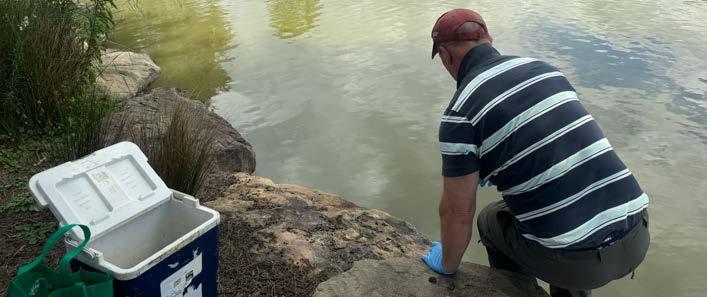
Calls are growing for urgent government action to address the PFAS contamination crisis across the Hawkesbury and Blue Mountains, with the Greens pushing for free blood tests, better health support, and a total phase-out of the toxic "forever chemicals."
Cate Faehrmann, Greens MP and Chair of the NSW Parliamentary Inquiry into PFAS Contamination in Drinking Water Supplies, visited the region this week alongside federal Greens candidate for Macquarie, Terry Morgan, to demand coordinated action from the federal and state governments.

It follows alarming findings of PFAS chemicals in drinking water and waterways across the Hawkesbury and Blue Mountains. Testing by the NSW Environment Protection Authority (EPA) confirmed elevated levels of PFOS, one of the most harmful types of PFAS, in local water supplies. Earlier this year, Hawkesbury Post revealed that bridge construction workers were ordered out of the Hawkesbury River after contamination fears,however the EPA recently said recent testing found PFAS levels in the Hawkesbury River are now well below national safety guidelines for recreation.
Faehrmann says residents who may have unknowingly been exposed for decades are being left to bear the burden of paying hundreds of dollars for private blood tests.
“Communities have a right to know what’s in their water and what’s in their bodies," she said. "It’s totally unacceptable that some Hawkesbury and Blue Mountains residents are paying $500 a pop to know their PFAS blood levels."
Faehrmann said a government-funded program was urgently needed to offer free blood testing, ongoing health monitoring, and public reporting of PFAS levels across water, soil, wildlife, and agricultural products.
Under the Greens' plan, a NSW PFAS Public Health Monitoring Taskforce would be established to provide free blood testing and health support to impacted communities, while comprehensive public testing of drinking water, soil, wildlife, and agricultural products would be undertaken regularly. PFAS would be urgently phased out from consumer and industrial products, including packaging, agrichemicals, household goods and cosmetics, with mandatory labelling until a full ban is in place. Drinking water standards would also be tightened to align with new international cancer findings, and First Nations communities would receive targeted health services.
"People have already undergone enormous stress after being reassured their water was safe, only to find they have likely been drinking contaminated water for years. The least the government can do is pay for blood testing and support them with follow-up health services," Faehrmann said.
Federal candidate Terry Morgan
said residents were angry at the ongoing blame-shifting between government agencies and demanded proper leadership.
“Blue Mountains and Hawkesbury residents are frustrated and fearful after the discovery of high PFOS levels in our drinking water," he said. "It’s vital that federal and state governments work together, including with local councils, to give residents the resources they need to assess their exposure and protect their health."
Mr Morgan also warned that the region’s renowned natural beauty and biodiversity were under threat.
“The presence of these forever chemicals in our environment is alarming. PFAS must be urgently phased out."
The Hawkesbury, like numerous other areas near military bases across the country, became a significant PFAS hotspot due to contamination from RAAF Base Richmond. For decades, firefighting foams containing PFAS were used at the base, and the chemicals have since spread onto the Hawkesbury River floodplain, contaminating groundwater, soil, and the river.
Despite international moves towards stronger regulation, Australian authorities have so far been slow to act. While the World Health Organization’s cancer research agency recently classified PFOA as carcinogenic and PFOS as possibly carcinogenic, Australian drinking water guidelines still allow levels far higher than recommended overseas.
The Greens are pushing for the maximum allowable levels to be lowered immediately and for PFAS to be banned across all consumer and industrial uses, including packaging, agrichemicals, and household products.
As previously reported by the Hawkesbury Post, concerns about PFAS contamination have been steadily rising, with residents expressing frustration over the lack of transparency and support.
Ms Faehrmann said both state and federal Labor governments needed to stop "burying their heads in the sand" and treat PFAS contamination as the public health crisis it is.
“We’re relying on outdated science and refusing to acknowledge we’ve got a problem. It’s time for real action," she said
After more than half a century of waiting, Pitt Town residents are finally seeing progress — not just on paper, but in concrete and steel.
“We are very pleased to see it get to construction stage after 60 years of waiting. It's just wonderful news to see construction commence,” said Chris Bell, President of the Pitt Town Progress Association. “We are about to see the construction commence and even better news that it’s due to be completed by the end of 2026.”
The sense of relief in the community is palpable.
“We sure will. We will surely be celebrating. There will most certainly be a celebration,” Mr Bell added.
A construction contract has now been awarded for the long-promised $100 million Pitt Town bypass, with work on the 950-metre route expected to begin in the coming months. The project will be built by Abergeldie Complex Infrastructure and is expected to open to traffic in late 2026.
Federal Member for Macquarie, Susan Templeman, said the announcement marked a major step forward for a community that has waited far too long.
“I welcome the selection of a builder which is a significant milestone for the Pitt Town community and the Pitt Town Bypass project,” Ms Templeman said.

“Having advocated for many years alongside the Pitt Town Progress Association for the Bypass, with promises but little progress, I can say the Minns government has made a huge difference, committing and then delivering moving.”
The bypass will extend Pitt Town Road past Bathurst Street onto Cattai Road, east of Eldon Street, and include two new roundabouts and a bridge over Hortons Creek. Designed to reduce traffic in the town centre, it will provide an alternative route for the more than 10,000 vehicles — including up to 1,000 trucks - that currently pass through the narrow main street each day.
“This project will make a huge difference not only to road safety and conges
and the quality of life for locals,” Ms Templeman said.
Pitt Town has been grappling with growing traffic volumes for decades, particularly from trucks travelling to and from sand quarries in the nearby Hills district. Despite discussions about a bypass beginning in the 1960s, the project has faced multiple delays and funding setbacks over the years.
The new road will improve travel times between Windsor and Wisemans Ferry, reduce congestion, and enhance
bridge crossings, a roundabout at Eldon Street and Old Pitt Town Road, another at Pitt Town Road/Bathurst Street and Glebe Road, and a partial closure of Cattai Road to maintain access to Buckingham Street. For locals like Chris Bell, who have long carried the burden of advocacy and lived with the daily impacts of through-traffic, the announcement feels like a long-awaited turning point. This time, it’s not just another promise. This time, the diggers are coming.


After a tumultuous few years, Agnes Banks Equine Clinic (ABEC) is set for a fresh start under new ownership. On Friday, a trio of veterinarians - Christine Smith, Lauren Jordan, and Hadley Willsallen - finalised the purchase of the 30-year-old Hawkesbury equine practice, marking a turning point for the clinic and its future.
The new owners are no strangers to ABEC. Each has deep professional and personal ties to the practice, having worked there in various capacities over the years. Their decision to take over comes after a challenging period that saw staff departures, community frustration, and, ultimately, the clinic’s closure in late 2023. The practice was temporarily reopened in early 2024 under corporate management, but its long-term viability remained uncertain until Smith, Jordan, and Willsallen stepped in.
Lauren Jordan, one of the new owners, acknowledged the difficulties ABEC faced in recent years, including economic pressures, floods, and the broader challenges of corporate veterinary management. “We understand why the previous owner sold - running a clinic of this scale alone is a huge responsibility. The corporate group that took over had good intentions, but there were missteps that impacted both staff and clients. The changes they made didn’t always align with the expectations of a tight-knit equine community like ours,” Jordan said.
Under corporate ownership, ABEC saw significant turnover in staff, which led to a decline in client trust. “Equine veterinary care is deeply personal. Clients come for their vet, not just for
In a chance encounter that perfectly captured the international flavour of Hawkesbury’s polo season, a group of Argentinian polo grooms found themselves sharing a morning coffee with Deputy Prime Minister Richard Marles and local MP Susan Templeman at the Black Duck Café in Richmond.
The Black Duck, a favourite haunt of the polo community and Richmond locals alike, played host to the informal meeting this week, when the visiting grooms stopped in for a break during their busy season and ran into the federal MPs.
Also pictured is café owner Tammy, who’s been serving up brews and banter to the local polo crowd for years. Her café has long been a hub for riders, trainers, and curious locals keen to soak up a bit of the season’s buzz.
Each year, the Hawkesbury’s polo scene draws skilled players and support crews from across the globe, with Argentina’s renowned horsemen a regular fixture on the local circuit. Their contribution isn’t just on the field - the sport pumps millions of dollars into the local economy each season through accommodation, hospitality, transport, and equine services.
“It’s a reminder of just how important regional events and industries are to our national story,” said Ms Templeman, who greeted the visiting workers warmly. “Polo in the Hawkesbury isn’t just sport - it’s jobs, it’s culture, and it’s connection.”
the practice name. When you lose that continuity, you lose the heart of the clinic,” Jordan explained. By late 2023, with few veterinarians remaining, the clinic shut its doors. A small group of former staff, including Jordan and Smith, returned in February 2024 in an attempt to revive operations, but rebuilding trust proved difficult. By the end of the year, corporate ownership opted to sell, and the opportunity arose for a homegrown revival.
The new owners admit their decision was driven more by emotion than financial logic. “It’s a huge leap, but we couldn’t watch the practice disappear. We’ve all been part of ABEC for so long - it’s family to us,” Jordan said. “If we hadn’t stepped in, it would have shut down permanently. That wasn’t an option.”
The transition is already underway. Over the weekend, staff and supporters held a working bee, giving the clinic a fresh coat of paint, adding flowers, and restoring a sense of community spirit. But the real challenge lies aheadrebuilding the team and restoring the clinic’s full 24/7 services.
“We need the community’s support,” Jordan emphasised. “Bringing in more vets is essential, but that takes time. We know people want the clinic back to what it was, and we’ll get there, but we have to do it sustainably.”
As ABEC moves forward, its new owners are focused on regaining the trust of clients and ensuring the clinic remains a cornerstone of equine care in the Hawkesbury. For those who have relied on the clinic for decades, its return to local hands is a welcome sign of stability and renewal.

The long-awaited upgrade of Richmond Bridge will go ahead in full, after the Albanese Labor Government announced a crucial $114 million funding top-up to complete the second stage of the project.
Originally split into two stages due to a budget shortfall, the project had faced significant delays and community concern. But with today’s announcement, the government has pledged that, if re-elected, it will deliver the bridge and its connecting roads as originally designed - with one key exception: a small section of The Driftway will no longer proceed under the revised scope.
The New Richmond Bridge will be built around 10 metres higher than the existing 120-year-old bridge, with elevated approach roads to ensure it remains open during one-in-20-year flood events. The current bridge, once used for trains and now carrying increasingly heavy road traffic, will be repurposed as a pedestrian and cycling path.
The federal government says the upgrade will ease congestion, improve traffic flow and road safety, and better connect the communities of North Richmond, Richmond, Hobartville and Londonderry.
“The days of Richmond and North Richmond being connected by a century-old bridge with one lane in and out are numbered,” the federal government said in a statement.
The announcement also includes the
funding of a bypass to Londonderry via a new road running parallel to Southee Road - a move likely to come as welcome relief to residents who had been facing the prospect of traffic volumes doubling outside their homes if the original plan wasn’t completed.
“While my prime role has been to secure federal funding, I maintain the belief that people in Southee Rd deserve to have their quality of life protected,” said Member for Macquarie Susan Templeman. “As work proceeds with Transport for NSW, I’ll continue to support residents in that objective.”
The funding certainty comes after Transport for NSW released updated design plans in February, revealing that Stage 2B - the roads leading to the bridge - had no confirmed timeline or funding. Without it, North Richmond residents feared worsening congestion, and Southee Road residents were bracing for a dramatic increase in local traffic.
Today’s announcement brings the total investment in the New Richmond Bridge and Traffic Improvements project to more than $515 million, including $400 million from the federal government.
“This project will make a big difference for the Richmond community, as well as the broader Hawkesbury,” said Infrastructure Minister Catherine King. “With fast-moving flooding occurring frequently in this region, we are building

not just a new bridge but the connections to ensure people have that extra time to get in and out of the watch zones.”
She also praised the project's transformation of the historic Richmond Bridge into a walking and cycling route, and credited local MP Susan Templeman for helping bring all levels of government together.
“This is a really good outcome for this community,” Minister King said.
Ms Templeman said the new funding “provides the certainty the community has been seeking since the Review of Environmental Factors was released in
December.”
“It means there is funding for the approach roads, the new taller bridge and the bypass of Richmond to be built all together,” she said. “I’ve been fighting to reduce congestion and travel times for people across the river since 2010 and am proud to work with both the Federal and State Ministers to deliver this funding.”
The announcement also follows a broader $580 million commitment in the 2025–2026 Federal Budget for flood resilience and housing growth in the Hawkesbury-Nepean Valley.


Fitzgerald Aged Care, a long-standing not-for-profit provider in the Hawkesbury, says its future is under threat after being deemed ineligible for Federal capital grants under current government funding rules.
Despite having a development application and construction certificate already approved for a critical 24-room expansion, Fitzgerald cannot begin the project because the Commonwealth classifies it as being located in a metropolitan city. The organisation says this definition is inaccurate and unfairly penalises peri-urban communities like the Hawkesbury.
“This is clearly wrong and lacks an appreciation of the reality of peri-urban region such as ours,” a Fitzgerald Aged Care Chairperson Rhonda Hawkins AM said. “There is no doubt that it is
inherently unfair to areas such as the Hawkesbury. This must change.”
The region, which had a population of just over 68,000 in 2023 spread across more than 2,700 square kilometres, has a population density of 24.55 people per square kilometre - vastly different to the 8,660 people per square kilometre found in the City of Sydney.
“Clearly, the Hawkesbury is not a typical urban region, yet it is excluded from many government funding programs which would address critical needs for services and community development,” Hawkins said. “It makes no sense that the Hawkesbury is considered to be the same as metropolitan Sydney.”
The classification falls under the Modified Monash Model, a system introduced by the former Coalition government that is still used to determine eligibility for a
range of rural and regional health and aged care grants. As it stands, the model prevents Fitzgerald from applying for Federal funding necessary to expand and modernise its services.
“Unless there is a change in the way in which the Hawkesbury is classified in funding models by governments, many current services will either fail or substantially reduce their services,” Hawkins said.
Local MP Susan Templeman, a former Fitzgerald board member, recently visited the site with election candidate Mike Creed. According to Hawkins, Templeman committed to continue advocating for two key changes: new capital funding for aged care in peri-urban areas like the Hawkesbury, and reform of the Modified Monash Model. She added that, “Mike Creed gave us a good hearing.”
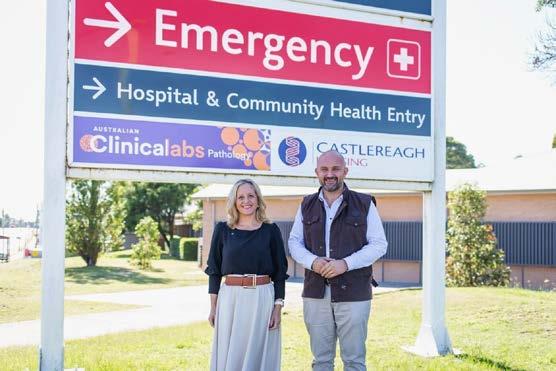
Fitzgerald Aged Care, which traces its roots back to 1818, currently holds a four-star rating and reports consistently strong satisfaction from residents and families. But Hawkins said that without growth, its future remains uncertain.
“Due to its size and location, Fitzgerald must grow to survive. Even with increased operational funding under the new model, unless Fitzgerald is funded to grow, it runs the very real risk of having to close.”
Hawkins describes the proposed extension as vital, not only to its own survival but to the broader community.
“The Hawkesbury matters – it is not just a pale shadow of metropolitan Sydney. Fitzgerald is the embodiment of all that is good in the Hawkesbury and it is vital that the development is funded to proceed now,” Hawkins said.
Residents in the Hawkesbury are being promised a new Medicare Urgent Care Clinic, with both major parties now pledging to deliver one if elected to government.
The Liberal Party’s commitment, announced this week, would see an Urgent Care Clinic established under a future Dutton-led government. Shadow Minister for Communications and Western Sydney, Sarah McIntosh, said the policy aimed to address what the party described as “Labor’s
“We recognise the urgent need for better access to affordable health services in the middle of Labor’s primary healthcare crisis,” Mrs McIntosh
“The Liberals will deliver Urgent Care Clinics as they were intended - focused on relieving pressure on local hospitals and providing real access to Liberal candidate for Macquarie, Mike Creed, said the plan was driven by local need and his own
“Labor has had three years to secure an Urgent
Care Clinic for Macquarie, but they have failed to deliver,” Mr Creed said.
“The people of the Hawkesbury don’t need more political games - they need access to affordable and quality healthcare.”
Creed pointed to a nearly 10 per cent drop in the GP bulk billing rate in Macquarie under the Albanese government and said only a Dutton government would “ensure Macquarie gets the health infrastructure it desperately needs.”
The Liberal pledge comes just weeks after Labor also promised to establish a Medicare Urgent Care Clinic in the Hawkesbury, following pressure from local residents and community groups.
Federal Member for Macquarie, Susan Templeman, said more than 2,000 locals had signed a petition supporting the clinic, and that the new service would run seven days a week with extended hours.
She said it would help reduce the burden on the Hawkesbury District Hospital Emergency Department, particularly after the closure of the After Hours GP Clinic under the previous Coalition government.
Nurses and midwives at Nepean Private Hospital walked off the job for 26 hours last month, joining a wave of industrial action sweeping across Healthscope hospitals in New South Wales.
The strike - part of ongoing rolling stoppages targeting Australia’s sec ond-largest private hospital operator - follows similar action at Newcastle Private, Northern Beaches Hospital, and Norwest Private.
Staff at Nepean are demanding safer staffing conditions, fairer pay, and mandated nurse-to-patient and mid wife-to-patient ratios. The NSW Nurses and Midwives’ Association (NSWNMA), which represents the striking workers, says members are exhausted and over worked, and patient safety is at risk.
“We need mandated nurse-to-patient and midwife-to-patient ratios to ensure safe, high-quality care,” an NSWNMA spokesperson said. “Our members are exhausted and overworked. Healthscope must recognise the reality on the ground and act now.”
The striking workers are pushing for a 15% wage increase over 12 months, 30% night shift penalties, improved leave entitlements, and better recognition of overtime. While an overtime ban was in place during the stop-work, minimum staffing levels and life-preserving care were maintained throughout.

The action at Nepean comes just weeks after a major industrial victory for staff at Ramsay Health Care, Australia’s largest private hospital operator, where nurses and midwives overwhelmingly voted to accept a new enterprise
industrial activity, 60-plus strikes, and three previous rejected offers. In addition to the pay rise, Ramsay nurses secured key improvements to working conditions, such as reduced patient loads for nurses in charge,
doubled the original pay offer and forced the country’s largest private hospital operator to listen. The fight for safer staffing isn’t over, but this is a major step forward.”
Michaela Maljcov, President of the
remains a priority.”
Ramsay Health Care operates 39 facilities across NSW, including hospitals in Sydney, Newcastle, Wollongong, Albury and the Mid North Coast.


The Hawkesbury Post is proud to launch our new Education section – covering everything from preschool to high school, as well as important developments in education across New South Wales.
We’ll be keeping you informed about what’s happening in our local schools, preschools, before- and after-school care centres, and highlighting programs and initiatives that support our students. We'll also cover broader education news across NSW, including changes to curriculum, government policies, and anything else that may impact your child's learning journey.
If you would like your preschool, before- or after-school care service featured in the Hawkesbury Post, we’d love to hear from you. Please get in touch. You can send us an email at info@hawkesburypost.com.au
Our goal is to help keep families across the Hawkesbury up to date with the information that matters most when it comes to education – in our community and beyond
Tucked away in the heart of Kurmond, Blue Wren Childcare has been a quiet achiever for almost two decades – and now, under new leadership, it’s continuing to grow a little wilder.
Since August 2023, the new Director Rozana has brought fresh energy to the long-standing centre, which cares for up to 80 children aged from birth to five years each day. Backed by a team of around 15 dedicated and qualified educators, she says what sets Blue Wren apart is its deep connection with nature and the community.
“We focus on nature-based activities,” she says. “Our outdoor area is huge, and we spend as much time outside as possible – playing in the mud, climbing,

picking fruit straight off the trees. It’s hands-on, real-life learning.”
Blue Wren’s backyard is home to mulberry, mango, lemon, and orange trees, giving children the freedom to harvest seasonal fruit. “In mulberry season, their hands and faces are purple – they love it,” she laughs.
But it’s not just the fruit that’s growing. The centre is also developing its own fruit and vegetable garden and has recently announced a partnership with local producers – including Scribbles, Riverview Produce, and local butcher Valley Meats – to provide fresh, wholesome meals on-site.
The centre’s school readiness program begins at age three, gradually building early literacy and numeracy skills while also nurturing emotional development and social confidence. “We nurture the whole child to ensure they are ready to thrive in school and beyond,” says the Director. “How to wait for a turn, how to make friends – it’s about preparing them for the structure of school, not just learning the alphabet and numbers.”
In addition to its core learning programs, Blue Wren also offers a variety of enriching extracurricular activities, including Soccer Training with Soccer Joeys, STEM sessions, Mini Master Chef, and engaging incursions – all designed to spark curiosity and support well-rounded development.
In 2024, Blue Wren was named an Outstanding Childcare Centre in the Hawkesbury and proudly received a Local

Business Award – an accolade the Director credits to the strong bonds between staff, families, and the wider Kurmond community.
“We are supported by a seasoned management team with over 30 years of combined experience in early childhood education. Their leadership ensures our strong focus on quality, compliance, and continuous improvement – upholding the highest standards in everything we do,” Rozana says..
“It’s the only long-running childcare centre in Kurmond, and we take that responsibility seriously,” she says. “We’re not just here to care for children – we’re here to grow with them.”
For families seeking a nurturing, nature-rich start for their little ones, Blue Wren Childcare is proving that the best learning often happens under the sky, with dirty hands and happy hearts. Sponsored Content

Estate litigation is becoming increasingly prevalent in New South Wales, with the latest court statistics showing an alarming 9% rise in cases being filed. For many, it is only after the death of a loved one that they discover the terms of their will, often sparking disputes among family members and close relatives.
In NSW, most family members are entitled to see a copy of the last valid will. A simple request to the executor or their legal representatives should grant access, provided the individual requesting it is legally entitled under state legislation. "In most cases, a copy of the will should not be unreasonably refused," said lawyer Kate Rafton, an expert in estate law.
Once the will is read, concerns can arise when a family member feels unfairly treated or believes the will is invalid. Rafton explained that there are several legal avenues available for those wishing to challenge the terms of the will. One of the most common methods is contesting a will through a Family Provision Claim. This is particularly frequent in situations where a family member - often a child - has been left out of the will entirely, or where there are promises of assets or money that never materialised. In some cases, if promised assets such as land were sold before death, leaving no funds to distribute, a Family Provision Claim may still be possible. Rafton clarified that these
types of claims are among the most common estate disputes before the Supreme Court of NSW.
Under NSW legislation, various individuals are eligible to apply for a Family Provision Claim, including spouses, de facto partners, and children of the deceased. If a claim is successful, the court may order a redistribution of the estate to ensure fair provision for eligible individuals.
On the other hand, defending a will is equally complex. For those who are executors or beneficiaries of a contested will, seeking legal representation is crucial. "If you are notified that a will is being contested, you need to seek immediate legal advice," advised Rafton. "In most cases, the estate will cover the legal costs associated with defending the will." Early advice and representation can help ensure that the executor’s duties are fulfilled without undue complications.
Concerns can also arise regarding the validity of a will, especially if it was updated shortly before the person’s death. Family members might question whether there was undue influence or fraud involved in the drafting of the will, or whether the deceased lacked the mental capacity to make the changes. Rafton pointed out that in these cases, a legal claim challenging the will’s validity would require an application to the Supreme Court, where a judge would review the evidence, including expert testimony, to determine its authen-
ticity.
In many cases, the first step in resolving estate disputes is mediation or negotiation. "Mediation can be particularly useful when it's clear there has been an error in the drafting of the will or if an asset was sold before death," Rafton said. "Negotiating a settlement can save time, reduce stress, and avoid escalating legal fees for all parties involved."
For those considering contesting a will, it's important to know the grounds for doing so. Common grounds include lack of testamentary capacity, undue influence, fraud, improper execution, or failure to provide for an eligible person. In NSW, the time limit for contesting a will is typically 12 months from the date of death, so Rafton stressed the importance of seeking legal advice promptly to avoid missing crucial deadlines. Finally, for individuals concerned about the cost of legal representation, Rafton assured that there are options available. "In some cases, the estate can fund the costs of legal representation for those contesting the will," she said. "The first step is to schedule an initial meeting to discuss your specific case and explore your options."
With estate disputes on the rise, families facing will-related issues must carefully consider their legal rights and options, seeking professional advice to navigate these complex and often emotional matters.
Sponsored Content

SUSAN TEMPLEMAN MP - FEDERAL MEMBER FOR MACQUARIE
Susan Templeman Opinion

Hawkesbury people have heard me talk a lot in the last three years about improvements Labor is making to women’s health services, including opening the Endometriosis clinic in Rouse Hill and, most recently, adding newer oral contraceptives and menopause gels to the PBS so they are cheaper for women to access.
But I’ve also been committed to tackling the issues that impact men’s health, especially men’s mental health, in my time in Parliament.
Whether it’s at men’s sheds, walking groups or as part of community volunteering, we need more conversations about men’s health and good access to services.
I was grateful to receive a call recently from a gentleman who had used the new, free Medicare Mental Services Centre in Richmond and wanted to acknowledge the help he’d received there. It’s a walk-in service, for all ages, and I’m very pleased that blokes are discovering it! I know too many men neglect their own health, especially when economic times are tight.
So I am very pleased that a re-elected
Albanese Labor Government will provide an additional $32 million to support men's health and break the stigma around seeking support.
When I’ve met with the men’s health experts from Movember, they’ve told me that the statistics show as many as two in every three men are skipping health support due to gender stereotypes – and around half believe avoiding health check-ups is normal.
Australian men are three times more likely to take their own life than women and are significantly less likely to seek mental health support.
Labor will deliver $11.3 million for Movember to provide men’s healthcare training to primary healthcare workers, and to develop a campaign to encourage men to visit the doctor.
As Movember says, this investment into primary care will help to equip GPs and clinicians with the tools to better engage and support men and boys with their healthcare needs, so they don’t slip through the cracks.
A Labor government will also invest $20.7 million for grassroots initiatives that support men’s mental health and wellbeing in community settings, including supporting another two years of Men’s Shed Initiative’s National Shed Development Program, providing grants of up to $10,000 to individual Men’s Sheds. It will also support the Australian Men’s Sheds Association to deliver new health promotion and prevention programs.
Men’s sheds are helping men and boys find mateship and social support for the 75,000 men who visit them, to help them stay physically and mentally healthy. Our various Hawkesbury Men’s Sheds are among 1,300 across the country.
The Men’s Shed Association says the
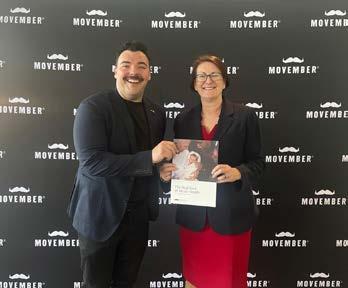
additional funding will go a long way in enabling them to continue servicing the highly successful Men’s Shed movement, as well as implement new health promotion and preventative programs.
Among the other initiatives is the $3 million to support the delivery of Plus Paternal Initiative, a program that helps men prepare for fatherhood and supports the development of good parenting skills during the perinatal period.
This extra spending on men’s health and builds on programs we invested in in last year’s Budget, plus our invest-
ment to strengthen Medicare with more bulk billing, more Urgent Care Clinics (including in the Hawkesbury), more doctors and nurses, and delivering cheaper medicines, cutting the maximum price of PBS scripts to only $25. I will continue to advocate for improved physical and mental health services across the Hawkesbury. Our health system that Labor first created and then secured is the envy of the world, and we’ll continue to strengthen is so that your Medicare card is the only card you need.
As your member for Macquarie, I’m committed to building on our proud legacy of Medicare by making medicines cheaper and urgent care services more accessible.
We have already delivered the largest cut to the cost of medicines in the history of the PBS
If re-elected, we will make medicines even cheaper – with a script to cost Australians no more than $25 under the Pharmaceutical Benefits Scheme (PBS)
More choice, lower costs and better access to long-term contraceptives, with larger Medicare payments and more bulk billing for IUDs and birth control implants
60-day prescriptions saving time and money for millions of Australians with an ongoing health condition
And, I’ve fought for and won a new Medicare Urgent Care Clinic in the Hawkesbury

ROBYN PRESTON - STATE MEMBER FOR HAWKESBURY
Preston Opinion

This ANZAC Day in New South Wales, thousands gathered in silence to honour our fallen. From suburban cenotaphs to country town memorials across NSW, our communities paid tribute to the courage and sacrifice of those who served.
When NSW Parliament resumes, I will introduce on behalf of the Opposition, the Summary Offences Amendment (War Memorials and Other Protected Places) Bill 2025. A clear and respectful step to ensure that those who desecrate or disgrace war memorials, will face real consequences.
This is the second attempt to pass legislation that imposes stronger penalties for offences against war memorials. In 2024, the Opposition put forward a similar Bill which was blocked when Labor sided with the Greens and some Independents - a move veterans and families across NSW found deeply disappointing.
Every NSW war memorial tells a story
of sacrifice, service and mateship. Our memorials aren’t just monuments, they are a promise - a promise to remember, a promise to respect. When someone vandalises these memorials, they are desecrating the memory of every person whose name is etched in stone. We owe it to our veterans to ensure these cowards pay the price.
Right now, the maximum summary fine (without an expensive trial, typically before a jury) for damaging a war memorial is just $4,400. Offensive or indecent behaviour near a memorial attracts just a maximum $2,200 penalty. Courts can allow offenders to do community service instead of paying the prescribed penalties.
Under the Opposition’s Bill the maximum summary penalty for damaging a war memorial will increase to $22,000 or two years imprisonment, or both. The maximum penalty for offensive or indecent conduct near a memorial will also rise to $22,000.
Offenders will be required to pay for repairs, unless there are special circumstances, so that custodians like local councils, RSL sub-branches and not-forprofit organisations don’t have to foot the bill.
The option for a community service penalty will be removed. You don’t honour our Diggers with dawn services and then turn a blind eye when their memorials are defaced.
This is about respect, not compromise. Plain and simple. If you desecrate a war memorial, you should be appropriately punished with a heavy fine and even go to jail. No excuses. No community service. Pay the price!


I’m here to help you!
advocate on your behalf to find solutions offer advice and guidance about Government regulations, services and grants
assist with matters relating to transport, roads, education, health, water, welfare, mental health, veterans, emergency services, housing and Local Government
arrange congratulatory messages for significant birthdays and anniversaries
aid in Seniors Card applications and updating your enrolment provide Justice of the Peace services




1 Which marine mammal is sometimes called a sea cow?
2 From which part of the world do cows (pictured) originate: the Middle East, Northern Europe or India?
3 Who is the current king of Thailand?
4 Lugdunum was an ancient Roman city in Gaul that is now which French city?
5 Who wrote the 1997 novel Cidade de Deus (City of God), later made into a film of the same name?
6 How many gods are worshiped in Taoism?
7 Which dynasty ruled China for more than 400 years, from 202 BCE to 220 CE?
8 Which famous trade route began in China during this time?
9 What is asphalt primarily made of?
10 Who sang the most well-known recording of Along the Road to Gundagai in 1931?
Using the nine letters in the grid, how many words of four letters or more can you list? The centre letter must be included and each letter may only be used once. No colloquial or foreign words. No capitalised nouns, apostrophes or plural words ending in “s”.
MOTORCYCLE
PASSENGER PASSPORT PILOT ROAD SHIP SUITCASES
TAXI
TICKET TRAIN TRUCK VOYAGE
Starting with the seven-letter word, drop a letter and form a six-letter word. Continue in this manner until you reach the single letter at the bottom. You can rearrange the letters in each step, if necessary. AEROPLANE BICYCLE
Place each of the tiles of letters into the blank jigsaw below to create four six-letter words going across and down.
There may be more than one possible answer.
Insert each number from 1 to 9 in the shaded squares to solve all the horizontal and vertical equations. Multiplication and division are performed before addition and subtraction.

There may be more than one possible answer.
By Sarah Thompson

What kind of bird mum are you? It’s the boys of the bird world that grab all the attention with flashy feathers, over-the-top tails, vocal impersonations and devilish dances. However, it’s the unsung mums that are the true heroes as far as bringing up the kids is concerned. Two of our local favourites, the satin bowerbird and superb lyrebird are incredible mothers. They both have turned single parenting into an artform. By contrast, no one could be less maternal than a brush turkey


mum, the ultimate feminist! We love their varied approaches to parenting, and possibly see aspects of ourselves in their behaviour. We salute them all this Mothers Day. The male bowerbird is the original party boy, dressed to impress in iridescent blue plumage and violet-coloured eyes. Females, on the other hand, are a sensible green and brown to blend into their surroundings. Young males up to the age of 7 years are the same colour as the ladies which must cause some confusion on first dates.
To attract a mate, the male performs a ritualized and well-rehearsed song and dance routine in his exquisitely decorated bower. All things blue are added to impress the fussy females who visit various bowers and make their choice. It’s the older more experienced ladies that are the hardest to please. The bower is their disco and dad is there to show them a good time. After the loving, the pregnant mum basically does everything to bring up the babies.
She makes the nest – usually high in a tree to protect nestlings from predators such as goannas. She lays and incubates the eggs, camouflaging them with gum leaves while off looking for food. And once the chicks hatch, the mum alone feeds them a healthy diet of protein rich insects. This results in fast growing chicks who are able to fly by 3 weeks, but remain in her care for another 2 months. Meanwhile, the distracted male bowerbird fusses over his man-cave throughout the year in the hope of attracting another mate.
The impressive repertoire of male superb lyrebirds is well-known. David Attenborough labelled it the “most complex and most beautiful song in the world”. But it was only in recent years, when researchers turned their attention to the female, that her incredible singing ability was recognised. Possessing the same vocal range, the females use their voice to defend their territory from other females and preda-
tors, even impersonating hawks for this purpose.
Male lyrebirds are conspicuously absent when it comes to nest-building, incubation, brooding or feeding young. They busy themselves in the endless quest for ladies, looking for love, and defending their dance space from other males. The males with the most accurate and wide-ranging mimicry earning the most attention from females, one of the most magical sounds of the mountains.
As they are too heavy to fly far, feather-lined nests are at ground level or on rocks, tree stumps or in caves, and though camouflaged by vegetation they are an easy target for goannas and foxes. The nesting site is vigorously defended, and the scent trail reduced with the meticulous removal of all droppings. She lays only 1 egg which she incubates for 7 weeks, and the fledgeling remains in her care for up to a year, putting extra burden on the hardworking mum.
Brush Turkey mums literally drop and run when they lay their eggs in the enormous incubation mound, meticulously curated by the male. They take months to prepare, and some optimistic ones prepare more than one, presumably feeling lucky in love and having a bountiful supply of mulch, making them very unpopular with urban gardeners. Egg laden females lay up to 20 large eggs which are then nurtured by the dad for the next 50 days. As heat is generated by the rotting vegetation, the male probes the mound with his sensitive beak to keep the temperature perfect, ensuring he doesn’t cook his offspring. The eggs that have not been dug up by goannas or foxes then hatch and receive no parental care at all. In the true meaning of the word precocious, they can walk, feed and fly within hours of Emerging.
Whether you relate to the nurturing bowerbird or laissez faire brush turkey, here’s to all mums, the source of life. Happy Mothers Day
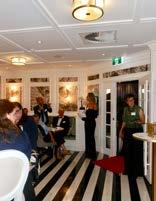
Business and community leaders from across the Hawkesbury gathered this week to put the two main contenders for the Federal seat of Macquarie - Labor’s Susan Templeman and Liberal’s Mike Creed - under the spotlight.
Hosted by the Bells Line of Road Business Council with support from the Hawkesbury Business Group, the forum attracted a broad cross-section of long-standing employers, emerging entrepreneurs, and community advocates.
Candidates were pressed on their achievements, their first 100-day plans if elected, and, critically, their strategies for improving disaster resilience and cutting through the bureaucratic delays hampering the region’s recovery and growth. With local bus9nesswoman Fiona Germaine steering the discussion, it was a night focused firmly on real-world action for the Hawkesbury.

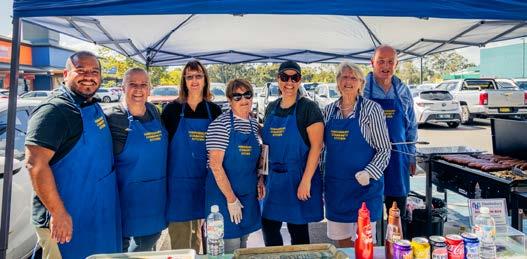
The Easter Bunny made an early appearance at Harvey Norman McGraths Hill, bringing plenty of smiles to local families. Hawkesbury Liberal candidate Mike Creed joined in the fun, stepping in as judge for the popular colouring-in competition.
Children enjoyed face painting, meeting the Easter Bunny, and a day full of excitement. Thanks to Harvey Norman McGraths Hill, The Woodland Fairy, Peter Haynes Perspectives, and Sweet Chocolate Warehouse, the event was a great success, with all proceeds donated to the Hawkesbury Community Kitchen.
Aurora Dodwell, a Year 7 student from Bligh Park, took out first prize, winning a Sony PlayStation. Tenyear-old Binuli Nimansa from Richmond won second prize, a JBL Flip Essential speaker, and eight-year-old Emily Brokker from Riverstone picked up third prize, a Fujifilm Mini camera.



As the sun rose over the Hawkesbury this ANZAC Day, residents gathered in quiet reflection to honour the courage, sacrifice and enduring spirit of our service men and women. From solemn dawn services to moving local ceremonies, the community came together to pay tribute to all who have served - and continue to serveour country. These photos capture moments of remembrance, pride, and unity across the region, as wreaths were laid and heads bowed. Lest we forget.


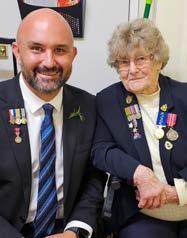

Technically, as the days become shorter, temperatures should drop, but at the time of writing, the temperature-dropping part of Autumn hasn't yet kicked in. However, despite that glitch, there's nothing quite like a fragrant, warming curry to brighten midweek meals at this time of year. Asma Khan's Methi Chicken from her cookbook "Ammu" delivers exactly that – a beautifully balanced dish where delicious boneless chicken thighs are enveloped in the earthy flavour of methi (fenugreek leaves), and tomato. I modified it slightly, using some sour cream and yoghurt when I didn't have enough yoghurt. I also increased the cardamom and cloves (because I love them.)
Fenugreek leaves add a slightly bitter yet wonderfully aromatic quality that mellows beautifully during cooking. The cassia bark adds warmth to the dish
- If you can't find it, you can replace it with a stick of cinnamon. I think these two ingredients elevate the dish into something rather special, with depth and complexity to the rich tomato-based sauce.
What makes this recipe particularly appealing for busy households is its versatility. The dish scales effortlessly – perfect for intimate family dinners or larger gatherings when entertaining friends. The heat level is entirely customisable, too; add extra dried chillies and chilli powder for those who prefer a fiery kick, or keep it moderate as I did, using dried Kashmiri chillies and Kashmiri
chilli powder from the Spice Basket in Richmond, which delivered a heat only marginally warmer than butter chicken – making it accessible for most palates.
As Autumn's chill settles in, this nourishing bowl of methi chicken might just become your new weeknight staple— comforting, fragrant, and wonderfully warming.
Methi (Fenugreek) Chicken Serves 6
4 TB Vegetable Oil
1kg or 6 Chicken thighs (boneless and skinless)
2 White or brown onions (sliced into thin half-moons)
2.5 cm piece of cassia bark or small cinnamon stick
5 Cardamom pods (bruised)

3 whole cloves
1 bay leaf
2 whole dried Kashmiri chillies
5-6cm grated ginger or a generous TB of minced jar ginger
3 garlic cloves crushed 1tsp turmeric
1TB ground coriander
200 g full-fat Greek Yoghurt
1.5 tsp fried fenugreek leaves (Kasur Methi)
1 tsp each of salt and Kashmiri chilli powder
4TB tomato puree
1/2 tsp sugar
Cream and coriander leaves to garnish
METHOD
Heat the oil in a heavy-based pan over medium-high heat. Fry the onions for about 20 minutes, stirring occasionally, until they are golden and a bit caramelised. Remove from the pan using a slotted spoon and spread on a plate to dry and crisp up a bit. Leave as much oil in the pan as possible.
Add the cassia bark or cinnamon, cardamom pods, cloves, bay leaves, and whole dried chillies, then add the chicken and cook until browned all over. Lower the heat to medium, and add the ginger and garlic, stirring for a minute or two until the garlic stops smelling 'raw'. Add the turmeric and ground coriander and stir until mixed in; then add the yoghurt and fenugreek leaves. Next, add the Kashmiri chilli powder and, salt and tomato puree. Reduce the heat further so the yoghurt doesn't boil or dry out. You can add a splash of water if needed, but you shouldn't need to. Put the lid on and simmer gently for another five minutes. Remove the lid, add the sugar, increase the heat back to medium-high, and stir until the oil rises to the surface.
Serve with Basmati rice, and drizzle with the cream and coriander.
After a nine-year hiatus, the highly anticipated Showcase of Showjumping is making its triumphant return to the Australian equestrian scene. From May 2 to 4, the picturesque Windsor Polo Club in Richmond, NSW, will host this premier event, drawing top showjumpers from across the nation to compete for nearly $150,000 in prize money.
Showjumping, an Olympic discipline, challenges horse and rider pairs to navigate a series of obstacles within a set time. It demands not only physical prowess but also a deep bond between the rider and their mount. The Showcase of Showjumping has historically been a platform where seasoned professionals and rising stars demonstrate their talents.
Adding to the event's prestige, renowned German course designer Frank Rothenberger will be crafting the competition courses. Known for his innovative and challenging layouts, Rothenberger's involvement promises to test the mettle of even the most experienced competitors.
“We’re thrilled to bring back an event to the Hawkesbury that attracts Australia’s top Grand Prix riders — including interstate stars Billy Raymont, Phil Lever, and Matea Davidson, as well as local Olympian Amber Fuller from Chatham Park in Glossodia. They’ll be joined by other Hawkesbury riders fresh from their overseas campaigns, including Amelia Douglas, Tom McDermott, and Josh Collins, all vying for the prize money.”

The weekend’s action kicks off with the $93,000 Teams Spectacular at 2:00 PM on Saturday, May 3, where groups of riders will go head-to-head in a test of strategy and precision. On Sunday afternoon, the stakes rise even higher with the $50,000 Grand Prix 150cm, where elite riders will tackle a formidable course in pursuit of the top prize.
Spectators can expect much more than just world-class sport. With free

entry, the event is accessible to all, and the grounds will come alive with food trucks, a café, and a bar. Sunday will also feature a kids’ corner with face painting and fun activities to keep younger visitors entertained. Set against the stunning backdrop of the Windsor Polo Club, nestled at the foot of the Blue Mountains, the Showcase promises not just excitement in the ring, but a full weekend of entertainment, community, and celebration.
Whether you're a lifelong equestrian fan or simply looking for a great day out, the return of the Showcase of Showjumping is one event not to be missed. Limited VIP are now available at https://www.trybooking.com/events/landing/1381470
From your ringside table, watch the top level competition while indulging in premium hospitality, delicious food and refreshing drinks. Perfect for a day out with friends or entertaining clients.
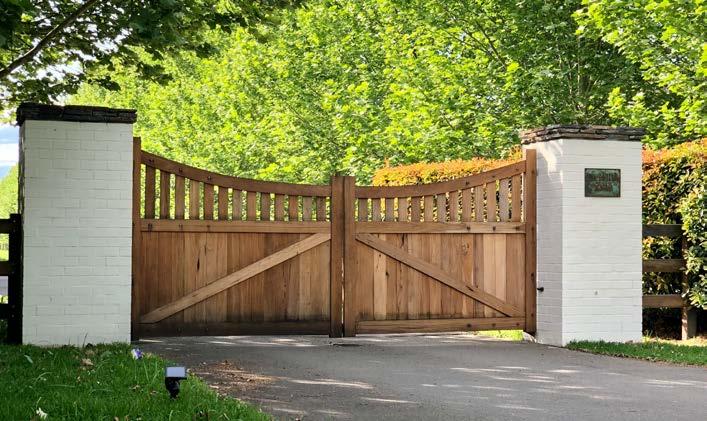
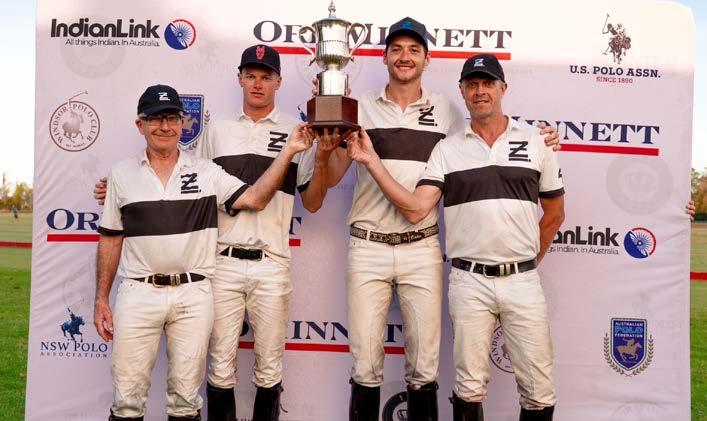
The Hawkesbury is not often the stage for a major sporting spectacle, but the Autumn Festival of Polo delivered just that, drawing teams from across Australia and some of the world's top players.
“We had international players from Argentina, England, New Zealand and Switzerland, as well as players represented from every state in Australia. We’ve never seen that before,” said Adam Meally of M Polo, who oversees the Festival of Polo tournament.
Over 12 days, 54 teams, more than 160 players, along with their support staff and close to 1000 polo ponies, descended on the Hawkesbury. A total of 95 games were played across seven fields. The polo clubs in the Richmond Lowlands are unique in Australia, with
no other region offering so many clubs in such close proximity - a key reason the event can be staged at such a large scale, and why it is such a highlight for everyone involved.
The polo community’s efforts to house the extra horses and accommodate the players and support staff were extraordinary, providing a significant boost to the local economy across hospitality, retail, feed stores, and equine services.
The pinnacle of the event, the prestigious Morton Cup played at Windsor Polo Club, was won by Ellerston White, featuring current English captain Tomas Beresford, father-son duo James and Will Harper, and patron David Paradice.
“The final was thrilling to watch. It’s the one time of the year where you get to see this calibre of polo,” said Mr Meally.


A small team of local schoolgirls has raised more than $7,000 for youth mental health, swimming throughout March as part of the Laps for Life initiative. The team, called Young Lives Lost in the Hawkesbury, is made up of just three members - but their message is powerful, and their impact is growing.
Leading the effort is 19-year-old Gemma King, a passionate mental health advocate who has been recognised as the 2024 Indigenous Sportsperson of the Year and Junior Citizen of the Year for the Hawkesbury. Gemma, a student at ANU, is also a member of the Headspace Youth Advisory Board and is determined to spread a message of hope to young people who may be struggling.
“There is help - you just need to talk to
someone,” Gemma said. “It’s okay not to be okay, and there are people out there who care.”
Joining Gemma in the pool are two Year 6 students from Windsor Public School, Mackenzie Auld and Delaney Grima. Together, the trio swam hundreds of laps during the month-long campaign, raising awareness and vital funds to support suicide prevention and mental health services for young Australians.
The team is now looking ahead to March 2026 and hopes local businesses might consider getting behind their efforts with sponsorship or support. For Gemma and her teammates, the goal is not just to raise money - but to start conversations that save lives.

